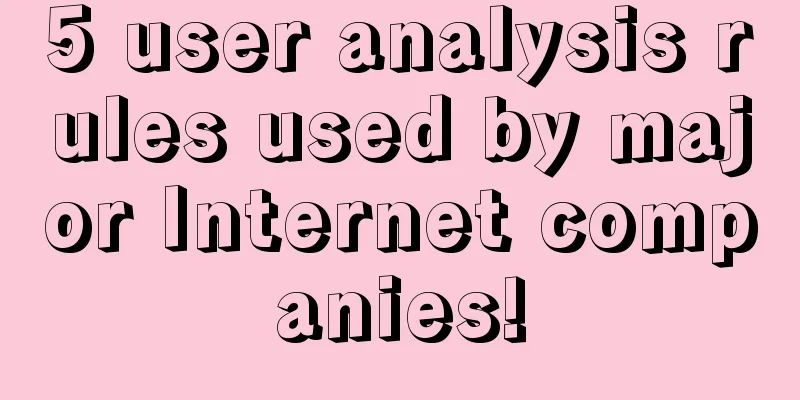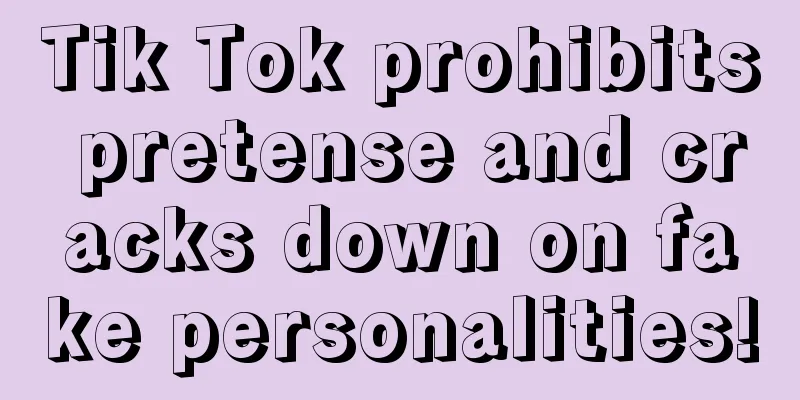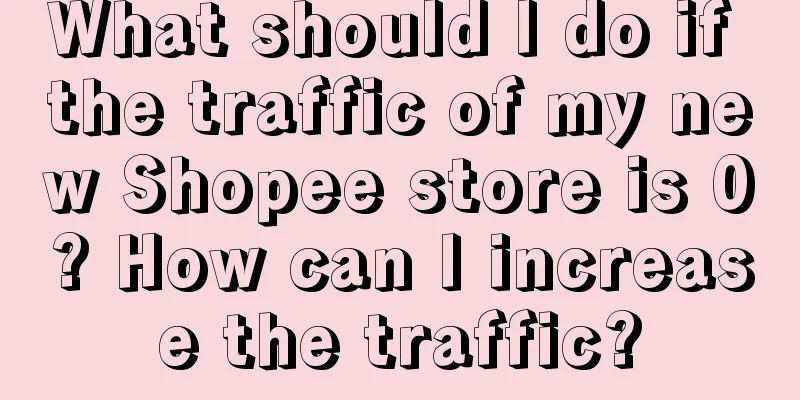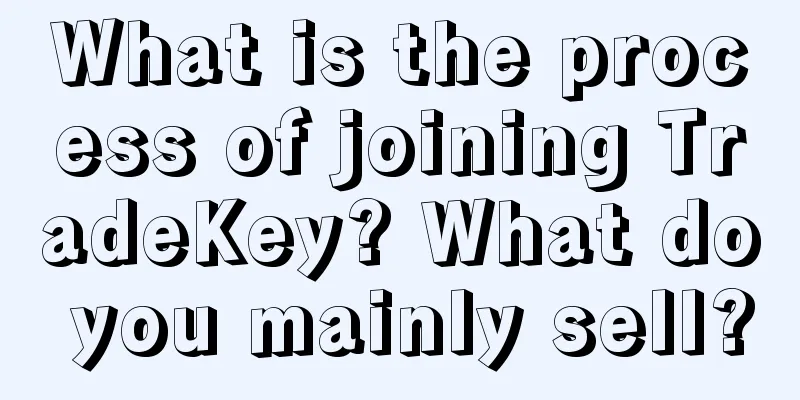5 user analysis rules used by major Internet companies!

I was chatting with a friend from a large company at the weekend and we talked about user analysis. Many companies do user analysis, but many people’s user analysis is superficial. They just count the number of active days, online time, and cumulative consumption of users, and then start staring at the numbers, not knowing how to make in-depth insights. After discussing with my friends, I summarized the 5 golden rules of user analysis, which can effectively solve the problem of "staring at indicators in a daze". Let's take a look. Rule 1: Start with user segmentationAs the saying goes: Long sleeves make good dancing, and more money makes good business. When doing data analysis, if the data itself is very small, it is difficult to analyze in-depth conclusions. Reflected in user analysis, if the user is a light user, who only leaves a mobile phone number when registering and logs in once or twice and then never comes back, there is definitely no data to analyze. Only heavy users with a lot of accumulated data can make in-depth interpretations. Therefore, if you want to make the user analysis more in-depth, you must first stratify and distinguish between light, medium, and heavy users, and then look at:
This way, you can see the reason and avoid counting a bunch of averages such as average monthly consumption and average monthly online time, which will erase the differences between users. For specific methods of user segmentation, you can refer to: This is the real user segmentation, not looking at averages. Rule 2: Indicators are divided into deep and shallow, and content depends on needsAfter completing the first step, many people naturally think: I see that heavy users log in 7 days a week, and light users log in 1 day a week, so I organize a check-in activity to get light users to log in 7 days. This idea is outrageous. Just imagine, when we use the app, do we seriously calculate the time and clicks when we log in? Unless I am trying to get the opening reward, no one would think so. The user's login, activity, and consumption behavior all have specific goals. Here is the content I like, here are the products I like, and here are the rewards. These are the intuitive reasons. And these reasons need to be obtained by labeling the content and products. In principle, the more behaviors (consumption, interaction) a user accumulates under a tag, the more demand the user has for the content/product under that tag. Based on this, when we want to promote a product, we should try it several times to expose the product to users so that we can accumulate data and make reasonable inferences (as shown in the figure below). Rule 3: Combine testing with explorationAfter completing the first step, many people will naturally think of analyzing how heavy users evolved from light users step by step, summarizing the experience, and copying it to other light users. This is a good idea, but it may not work, because the products and services that a company can provide to users are limited and can only attract specific users, so light and heavy users are not necessarily the same type of people. Therefore, through the consumption/interaction process of heavy users, a growth path can be summarized in theory:
BUT, this approach may not be useful for all light users, so it may be necessary to develop several more test lines and stimulate light users through different means to see which one works. There is a classic problem here: many people expect to use data to calculate an optimal recommendation rule to activate light users immediately. This is difficult because light users often have very little data accumulation, and it is difficult to draw effective conclusions in the absence of testing. Therefore, it is strongly recommended to do more testing and collect some data first. Moreover, operations are not without data analysis. There are many conventional/general recommendation logics that can be used (as shown in the figure below). For example, if a user buys beer, we should recommend diapers to him, right? No! If he really buys beer, there are too many things that are more suitable than diapers, such as:
These products are naturally related to each other and can be recommended without data. Therefore, we can first determine the test route based on these natural rules, and then continue to recommend information to stimulate users and see which one they will respond to. This not only accumulates data and lays the foundation for continuous insight into users, but also accumulates experience and quickly improves performance. Rule 4: Try more and accumulate continuouslyIt is not enough to only look at static data when doing user analysis, especially for light users/churned users. The existing data is too little, and subsequent behavior is all guesswork, so it is difficult to draw conclusions. Therefore, we can combine the existing product situation of our company + operating budget to formulate a route to increase users, and then test the effects one by one, while accumulating experience. The best case scenario is that through testing, a new path can be found to promote the conversion of light users to heavy users, which is a great achievement. Of course, in the worst case, it is found that under the existing conditions, the combination of products + discounts + content that can be tried has been exhausted and still cannot be done well. This is actually also valuable. Knowing that the existing means are not working, at least it can save some resources and promote the upgrade of underlying capabilities such as product upgrades/optimized operation methods. Many companies here will have problems in operation:
Often, the operations/product departments of these companies like to boast that "we are the ones who can defeat the master with random punches" and like to shout: "The purpose of activities is to generate benefits!" "Don't do it if you are not absolutely sure!" The result is that either there is no data at all and they never know what users like, or the data is polluted and new products are almost entirely dependent on promotions, with no additional conclusions other than "our users love to get bargains." Data analysis is not about taking one step and predicting the next 100 steps. It is about checking every step you take: whether there is any deviation, whether you are moving fast enough, and whether you can achieve your expectations. This is something you must remember. Rule 5: Discuss the effects of profit drivers separatelyThere is a situation that needs to be discussed separately, that is: the user is driven by interests and completes XX behavior. Common ones, such as:
In particular, when the goods subsidized by our company are:
This will trigger a large number of users to be active and spend a lot in the short term, but in the long run, these users have not established trust in our company and are simply looking for cheap products. The data generated by this profit-driven approach will interfere with the judgment of normal user needs, resulting in inaccurate subsequent judgments. Therefore, interest-driven behaviors must be individually identified and analyzed:
This can effectively identify who has been bribed, and the rest are likely to be users with real needs. Author: Down-to-earth Teacher Chen WeChat public account: Down-to-earth Teacher Chen |
<<: It’s hot, have you made your plans for 2024?
Recommend
How to open a store on eBay? How to charge?
eBay is an overseas purchasing platform that provi...
How many orders did Shopee receive during Double 11? What are the best-selling items on Shopee’s Double 11?
I believe many of you have heard of Shopee and hav...
How long does it take for German Amazon to arrive in China? How long does it take to ship?
Many friends now open stores on Amazon. Cross-bord...
What should I do if I can't access the shein shopping website? Can't I buy shein in China?
As a well-known international fashion shopping pla...
How long does it take for an eBay refund to be transferred to my credit card? What are some common questions?
More and more people choose to buy goods on cross-...
Reviewing the 60+ years of Barbie’s evolution, why has this brand been so popular for so many years?
Recently, Barbie fans are everywhere in the street...
6000-word article analyzing the operation trend of Xiaohongshu in 2024
In order to gain traffic on the Xiaohongshu platfo...
Do I need to use a VPN to use Shopify? What are the advantages of building a website with Shopify?
Shopify is a relatively well-developed independent...
Children's Day blessings, tell adults
Children's Day marketing is no longer exclusiv...
With high likes and widespread business orders, are comic bloggers becoming the new favorite of brands?
Comic bloggers are becoming a popular track nowada...
The market value of Zara’s parent company has exceeded one trillion yuan, but why has it lost momentum in my country?
In the fast fashion wave, Zara once led the trend,...
What is the main reason for the decline in Amazon Buy Box win rate?
On the Amazon platform, everyone can buy some prod...
In the new 10 yuan era of tea drinks, it is not only about price
The price war has spread to the tea beverage marke...
Is Shopee doing well now? What is the future of Shopee?
The Shopee platform currently gathers a lot of sto...
How to detach the Amazon child from the parent? What is the method?
More and more merchants are opening stores on Amaz...









